
Mid Day Energy News | November 15th, WTI Crude stood at $84.91/bl
New oil and gas exploration key to UK energy security and the energy transition finds OEUK report
Unpredictable fiscal conditions are denting the confidence of offshore energy-producing companies to invest and revitalise oil and gas exploration activity, reveals the Exploration Insight report published by Offshore Energies UK (OEUK) today.
The waters off the coast of the UK still contain oil and gas reserves equivalent to 15 billion barrels of oil equivalent (boe), enough to fuel the UK for 30 years, but more investment in exploration is needed to slow down the decline in domestic production to safeguard the nation’s energy security. Just four exploration wells have been drilled this year compared to 16 in 2019, the most recent pre-pandemic year comparison.
The report shows how the offshore energy industry is balancing the UK’s continuing demand for energy, while supporting the transition to a low carbon energy economy through its commitment to deliver net zero emissions by 2050. The Insight report assesses oil and gas exploration over the past ten years, explores the potential for future developments and considers how the 33rd offshore licensing round will impact exploration while reflecting on opportunities for the expanding sector to support the UK’s climate goals through the development of critical carbon capture and storage facilities.The report reveals there are significant prospective North Sea resources potentially recoverable within a 45km radius of offshore hubs, which could provide 8.4bn boe of hydrocarbons, representing roughly eight times the UK’s annual consumption of oil and gas. The Central North Sea holds the greatest opportunity for extending the lifetime of existing infrastructure with around 1.4bn boe in prospective resources within range of being tied back to offshore installations. Read More
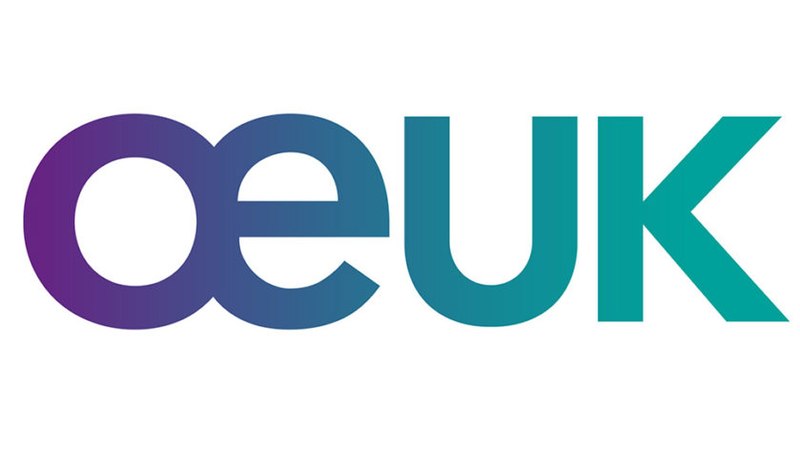
UK energy net import costs have increased 5-fold and could surge again if companies face further windfall taxes, warns Offshore Energies UK
The UK faced a £39 billion net import bill for oil, gas, and electricity between January and September this year – a five-fold increase over the same period last year, according to the latest government trade statistics.
The money flowed abroad to buy the gas, petrol and diesel needed to keep the UK’s homes warm, its vehicles on the road, its businesses running, and for generating electricity.
Details are contained in the latest import and export statistics released by the UK government on November 11, 2022.
The data has prompted Offshore Energies UK (OEUK) to warn that further import cost surges could follow, especially if windfall tax increases deter investment and so make the UK more reliant on imported energy.
The UK, like many countries, routinely imports and exports energy to manage supply and demand, but domestic gas production plays an important role in reducing reliance on imports. This is particularly relevant at times when global demand is high and therefore costs for European gas and international sources of Liquefied Natural Gas are higher.
While the UK has been a net importer of oil and gas for over a decade, domestic gas production continues to meet around half the UK’s needs. OEUK has warned that uncertainty over the future of the North Sea, including future taxes and regulation, means production is falling and could fall faster. Read More
Decommissioning on the rise: Billions of pounds to be spent as the time comes to decommission the infrastructure that has kept the UK’s energy flowing for the past 50 years, says a report. Offshore Energies UK (OEUK), the leading representative body for the UK’s offshore energy industry, will publish its flagship Decommissioning Insight report next week, predicting a surge in decommissioning activity over the next 3-4 years.
The report looks at the sector’s performance for 2021, predictions for 2022, and the challenges and opportunities in the decade ahead. It will be launched on November 22 at OEUK’s annual Offshore Decommissioning Conference.
Decommissioning is the process of withdrawing offshore energy infrastructure from use once it’s no longer needed or at the end of its lifecycle.
The growing demand for such services will generate billions of pounds worth of work for UK companies, especially for energy communities based near the central and northern North Sea. Such opportunities also bring challenges – including spikes in demand for supply chain services, along with competition for resources and skills generated by the expansion of renewables. Read More
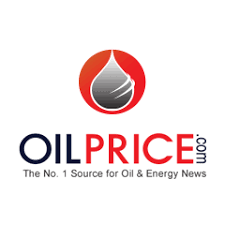
OPEC’s crude oil production dropped by 210,000 barrels per day (bpd) in October compared to the previous month after the cartel and the wider OPEC+ group reversed the small output increase in September.
The crude oil production of all 13 OPEC members, including those exempt from the OPEC+ pact – Venezuela, Iran, and Libya – averaged 29.49 million bpd in October, according to secondary sources in the organization’s closely-watched Monthly Oil Market Report (MOMR) published on Monday.
Saudi Arabia, the de facto leader of OPEC and its top producer, saw its production decline by 149,000 bpd to average 10.838 million bpd last month, as OPEC+ decided in early September to reverse a 100,000 bpd increase in target oil production, which was only intended for the month of September. Saudi Arabia’s production dropped the most among OPEC members and was below the targeted production level of 11.004 million bpd per the schedule the OPEC+ meeting had adopted. The Kingdom self-reported higher production for October than secondary sources’ estimates, at 10.957 million bpd, down by 84,000 bpd compared to September. Read More

Archer Aviation Inc. (NYSE: ACHR), a leader in electric vertical takeoff and landing (eVTOL) aircraft, today announced plans to locate its manufacturing facility in Covington, Georgia at a site adjacent to the Covington Municipal Airport.
Archer plans to initially build out a 350,000 square-foot facility on a 96-acre site capable of producing up to 650 aircraft per year. The planned eVTOL aircraft manufacturing facility is expected to create over 1,000 jobs over the long term. Construction is expected to be completed in the first half of 2024 with initial production expected to begin in the second half of 2024. The facility will be capable of being expanded by an additional 550,000 square feet, which is estimated to support production of up to 2,300 aircraft per year. In selecting the location for its first manufacturing facility, Archer completed a comprehensive survey of potential sites across the United States. Key considerations included the availability of talent in the local labor market, utility availability, ability to conduct seamless flight test operations, construction costs, and logistics. Archer will receive an incentive package, which includes land conveyance, tax incentives and Georgia REBA grant. As Archer looks to build its local community-focused relationships in Georgia, it anticipates that financing for the project will be provided by Synovus, the largest bank headquartered in the state. Read More

Deutsche Bahn AG (DB) has concluded a development partnership for long-distance rail transport with Siemens Mobility following a tender. In the first half of 2023, the two companies will work together on developing their vision of a new-generation high-speed train. Once the concept has been completed, a further tender is expected to follow in the second half of 2023 for the development, construction and certification of the new fleet.
“We are especially pleased that Siemens Mobility is one of two competing suppliers to be commissioned to develop a new concept for high-speed trains. This will give us the opportunity to continue our long-standing partnership with Deutsche Bahn. Even the form of cooperation is forward-looking: Rather than delivering a specific catalog of requirements, the most important features of the new generation of ICE trains will be developed in close cooperation with the customer,” said Albrecht Neumann, CEO Rolling Stock at Siemens Mobility.
Through the holistic approach of this partnership, the specific needs of the operator as well as passengers will be aligned with state-of-the-art technologies. This will help foster new ideas that make rail travel even more attractive, comfortable and convenient. The new generation of trains will make a decisive contribution toward meeting Deutsche Bahn’s declared goal: doubling the number of passengers using long-distance rail transport by 2030.
To achieve this, DB is relying on single-deck trains that are a maximum of 400 meters long, have a seating capacity of around 950 passengers, and a top speed of at least 300 km/h. In addition to providing enhanced passenger comfort, the new trains are also expected to set new standards in energy efficiency and technical availability. Siemens Mobility is an industry leader in the field of single-deck high-speed trains. More than 1,000 Siemens trains based on the high-speed Velaro platform are already in service around the world. Read More
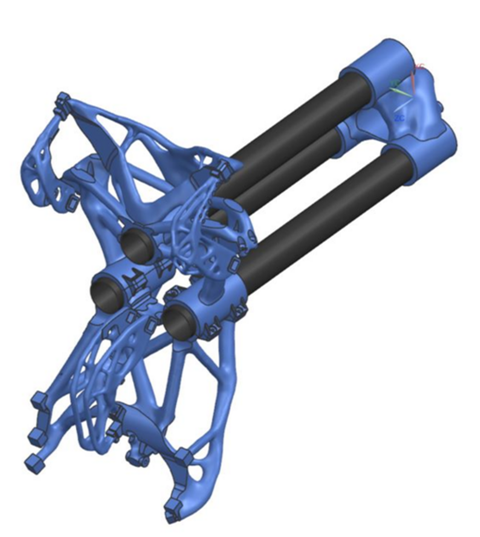
Siemens shows sustainable applications for green additive manufacturing
Design freedom in additive manufacturing reduces carbon footprint of gripper solutions in the automotive sector by around 80 percent
Decentralized production and optimized factory planning using digital twins reduce CO2 emissions during production and transport
3D printing with biodegradable materials reduces pollution
At this year’s Formnext, the international trade fair for additive manufacturing, Siemens is demonstrating what sustainable additive manufacturing looks like. Using several use cases, the technology company shows how resources, carbon footprint and environmental impact can be reduced. For this purpose, the entire value chain of a product must be considered transparently. Then climate targets can be achieved, and an environmentally friendly industry can be designed.
Sustainable design of additive gripper solutions
In the first use case, Siemens proves that optimized product design plays an important role in green additive manufacturing. With the gripper solution of a handling robot used in automotive production, the total mass of the gripper could be reduced by 64 percent. By utilizing the design freedom in additive manufacturing in the design phase, weight and thus required material can be significantly reduced. With “NX for AM”, Siemens offers a seamless digital process chain to find the best design through topology optimization, then test it using FEM simulation and prepare it for printing. In addition, “Teamcenter Product Cost Management” and “Product Carbon Footprint Calculator” allow for optimizing both production costs and carbon footprint of the product in advance. The specific project originally involved a gripper solution weighing over 58 kg, which was assembled from more than 660 parts. In addition to weight reduction, design freedom has also reduced 80 percent of assembly time by eliminating the need for complex assemblies. Comparing conventional and additive design, production costs were reduced by 73 percent; with an 82 percent lower carbon footprint. In addition, the weight reduction in turn enabled the use of smaller robots, resulting in energy savings of 54 percent per year. Read More

The latest IEA’s Monthly Electricity Statistics report including August 2022 data shows that for Total OECD:
In the OECD, total net electricity production was 972.9 TWh in August 2022, relatively unchanged (+0.6% y-o-y) compared to August 2021.
Electricity production from renewable sources increased by 2.4% y-o-y at 282.6 TWh. Lower electricity production from hydro (-0.4% y-o-y) and wind (-8.6% y-o-y) was compensated by strong solar power output, which grew by 23.4% y-o-y at 63.9 TWh. Overall, the share of renewables in the OECD electricity mix settled at 29.0%.
Nuclear electricity production dropped by 7.7% y-o-y at 144.1 TWh, confirming the trend observed during previous months. This decrease was mainly driven by OECD Europe (-22.0% y-o-y), followed by the OECD Americas (-1.1% y-o-y) and it was only partly mitigated by increased nuclear electricity production in OECD Asia-Oceania (+9.8% y-o-y).
Electricity production from combustible fuels amounted to 572.6 TWh, up by 2.5% or 14.0 TWh compared to the same month last year. Generation from natural gas continued the upward trend (+8.9% y-o-y), with increases registered across all OECD regions, while coal power production dropped by 6.0% y-o-y, driven by a sharp decrease in the OECD Americas. Overall, the share of combustible fuels in the OECD electricity mix was 58.9%.
Highlight of the month:
In OECD Europe, total net electricity amounted to 274.5 TWh in August 2022, down by 1.0% compared to August 2021. Higher production from combustible fuels (+14.6% y-o-y) could not compensate the strong decline in electricity production from nuclear (-22.0% y-o-y) and renewable sources (-5.4%). The drop in renewables was mainly driven by hydro production reflecting falls seen in most of the European countries due to drought conditions. Lower stored water volume has had strong impacts on both hydropower generation and cooling systems of other power plants. Read More
The latest IEA’s Monthly Oil Statistics report including August 2022 data shows that for Total OECD:
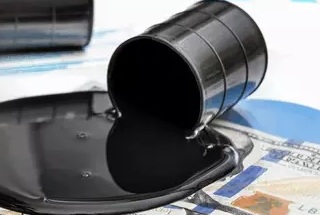
Total OECD production of crude oil, NGL and refinery feedstocks increased by 3.9% in August 2022 compared to August 2021.
Refinery gross output of total products grew by 2.7% on a year-on-year basis.
Net deliveries of total products grew in August 2022 compared to August 2021 (+3.6% y-o-y).
Oil stock levels on national territory decreased by 5 176 kt in August 2022 compared to the closing stock levels in July 2022 and closed at 474 million metric tons.
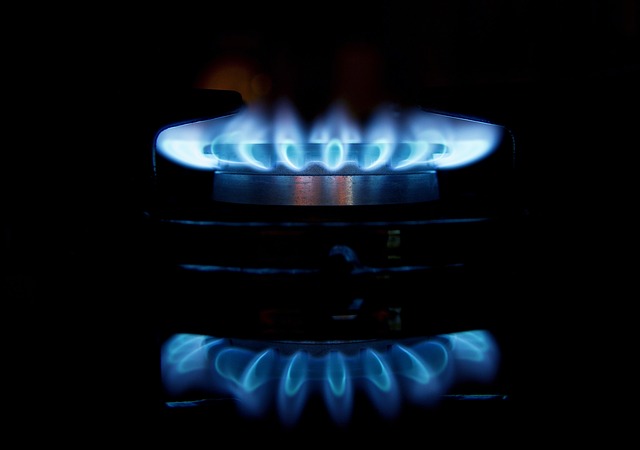
The latest IEA’s Monthly Gas Statistics report including August 2022 data shows that for Total OECD:
Production of natural gas increased by 3.7% compared to August 2021. Imports (entries)1 of natural gas were 2.6% lower on a year-on-year basis, and total OECD exports (exits)1 decreased by 2.1% in the same period. · Gross consumption of natural gas increased by 1.1% in August 2022 on a year-on-year basis. Read More
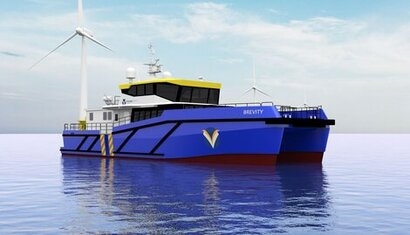
Strategic Marine has signed an order to build three ‘Brevity’-class crew transfer vessels (CTVs) from Chartwell Marine. The Brevity-class 27-metre catamaran design forms part of Chartwell’s new offshore wind support vessel range, which has seen multiple orders in the UK and USA since its launch in June 2022.
The Brevity responds to the need in the offshore wind support market for a high-powered CTV capable of cost-effective and low-emissions operation. It boasts enhanced manoeuvrability and stability due to its signature hull form optimisation and has a capacity of 32 personnel. Multiple crew configurations enable flexibility in space planning and enhance comfort necessary for longer offshore stays.
The 3 Brevity CTVs are meant for a new client for the Singapore based shipbuilder and the order shows a vote of confidence from Strategic Marine in Chartwell’s class-leading design expertise. As the first Chartwell project to be launched in Asia, the Brevity trio will enter an exciting new proving ground in the continent’s offshore wind support market.
The International Renewable Energy Agency estimates that by 2050, Asia will account for over 60% of all offshore wind capacity installed globally. The Global Wind Energy Council expects the Asian offshore market to have installed nearly 100 GW of offshore wind capacity by 2030. Read More
Strategic Marine has signed an order to build three ‘Brevity’-class crew transfer vessels (CTVs) from Chartwell Marine. The Brevity-class 27-metre catamaran design forms part of Chartwell’s new offshore wind support vessel range, which has seen multiple orders in the UK and USA since its launch in June 2022.
The Brevity-class vessel meets the need of the offshore wind support market for a high-powered CTV capable of cost-effective and low-emissions operation. It boasts enhanced manoeuvrability and stability due to its signature hull form optimisation and has a capacity of 32 personnel. Multiple crew configurations enable flexibility in space planning and enhance the comfort necessary during long offshore stays.
The three Brevity CTVs are meant for a new client for the Singapore-based shipbuilder, and the order shows Strategic Marine’s confidence in Chartwell’s class-leading design expertise. As the first Chartwell project to be launched in Asia, the Brevity trio enters an exciting new proving ground in the continent’s offshore wind support market.
The International Renewable Energy Agency estimates that by 2050, Asia will account for over 60% of all offshore wind capacity installed globally. The Global Wind Energy Council expects the Asian offshore market to have installed nearly 100 GW of offshore wind capacity by 2030. Read More
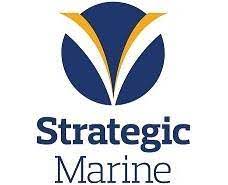
Specialist international aluminium shipbuilder Strategic Marine (S) Pte Ltd has won a newbuild contract for two Fast Crew Boats (FCB) from Centus Marine Sdn Bhd (CMSB). The two offshore support vessels will be the fifth and sixth FCBs ordered from the Singapore-based shipyard in the past two years.
CMSB provides offshore support vessels, which include Supply Vessels, Anchor Handling Tugs, Fast Crew Boats and other various types of vessels for marine offshore clients.
The 42-metre long FCBs will feature design and technical enhancements when compared to previous vessels. The robust hull engineering ensures vessel performance and efficacy as well as stability in tough marine environments and challenging offshore conditions. Each vessel will also be powered by three Cummins KTA50 engines, with expected cruising speeds of around 30 knots.
Safety and comfort are the top priorities in the design of these vessels. Each vessel can transport 100 personnel in business class recliner seats and is fitted with dedicated luggage racks in the main deck lounge. Accommodation for crew includes 12 berths in seven cabins. Under the safety aspect, each vessel offers bow boarding, an enlarged wheelhouse, and a large deck storage area with wide walkways to ensure safe and efficient crew transfer. Read More
Hess Corporation (NYSE: HES) announced today that it has completed the sale of its 8.16% interest in the Waha Concession in Libya in equal shares to TotalEnergies and ConocoPhillips. Hess Corporation is a leading global independent energy company engaged in the exploration and production of crude oil and natural gas. Read More

IMF Statistical Forum—Measuring the Tangible Benefits of Intangible Capital
November 16–17, 2022
The Tenth IMF Statistical Forum will explore how we can better measure intangible capital to better support investment policy, taxation policy, and macroeconomic analysis. IMF Managing Director Kristalina Georgieva will give the opening remarks. The event will feature Philippe Aghion, Professor at College de France, as the keynote speaker. The keynote will be followed by a one-on-one discussion with IMF Deputy Managing Director Bo Li. The forum will host discussions among distinguished speakers including academics, policymakers, statisticians, representatives of the private sector and, national and international organizations. Read More
An International Monetary Fund (IMF) mission led by S. Ali Abbas, reached a staff-level agreement on the fifth review of the authorities’ economic reform program supported by the Extended Fund Facility (EFF) arrangement . This agreement is subject to approval by the IMF’s management and the Executive Board.
At the conclusion of the discussions, Mr. Abbas issued the following statement:
“Despite turbulent global economic conditions, sound fiscal and monetary policies have helped maintain macroeconomic stability and access to international markets. The central government is expected to narrow its primary deficit (excluding grants) by 0.7 percent of GDP to 3.7 percent of GDP in 2022, with larger-than-expected fuel and food subsidy costs being offset by a rationalization of non-priority spending and a significant revenue overperformance. The latter reflects the government’s ongoing institutional and legislative efforts to tackle tax evasion and avoidance. The Central Bank of Jordan has increased interest rates in line with the US Federal Reserve policy rate in order to safeguard the peg; international reserves have remained adequate. Read More

ADNOC Drilling Company PJSC announced its financial results for the nine months and third quarter ended 30 September 2022.
ADNOC Drilling’s net profit for the nine-month period grew significantly, by 24% to $568 million, while revenue increased 15% to $1.94 billion compared to the same period last year. Nine-month EBITDA was $879 million for 2022, up 12% year-on-year, at an industry-leading EBITDA margin of 45.3%.
Year-on-year revenue growth was led by the Onshore segment, with ADNOC Drilling positioned as a key enabler of ADNOC’s ambitious program to significantly boost production capacity. The Company’s Oilfield Services (“OFS”) segment equally achieved very strong year-on-year gains.
Third quarter revenue grew 17% year-on-year to $671 million, driven primarily by the Onshore and OFS segments. Third quarter EBITDA increased by 5% year-on-year to $299 million for the period. Net profit for the third quarter grew by 6% year-on-year to $189 million. Strong Growth for Onshore and OFS; Offshore Performance Stable
• Onshore: Revenue for the nine-month period was $1,074 million, up 27% year-on-year, largely driven by new rigs joining the fleet. 3Q 2022 revenue was $372 million, up 33% year-on-year.
• Offshore Jackup: Revenue for the nine-month period was $431 million, broadly flat versus the prior year. 3Q 2022 revenue was $143 million and, due to planned maintenance, down 9% year-on-year. During the third quarter, ADNOC Drilling was awarded two contracts at a combined value of $3.4 billion to provide eight jack-up rigs to ADNOC Offshore.
• Offshore Island: Revenue for the nine-month period was $153 million, similar to 2022. 3Q 2022 revenue of $52 million was down 14% year-on-year due to a one-off claim concluded and recognised in 3Q 2021. During the third quarter, ADNOC Drilling was awarded a $711 million contract for the provision of four Island Drilling Units for up to ten years for ADNOC’s Hail and Ghasha Development Project.
• Oilfield Services (OFS): The OFS segment performed very well in the nine-month period, with revenue of $282 million, up 22% year-on-year, driven by higher activity from continued expansion, with healthy margin development. 3Q 2022 revenue was $103 million, up 40% year-on-year. During the third quarter, the OFS business was awarded contracts totalling $1.3 billion by ADNOC for the Hail and Ghasha Development Project, to provide integrated drilling services and fluids for up to ten years. In addition, OFS was awarded a $23 million contract by ADNOC Onshore for up to five years’ supply of production chemicals; as well as a four-year $2 million well head maintenance contract by Al Dhafra Petroleum. Read More
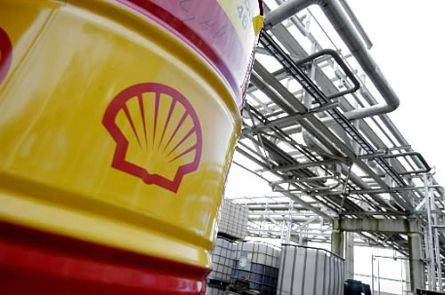
Shell Chemical Appalachia LLC, a subsidiary of Shell plc, today announced it has commenced operations of its Pennsylvania Chemical project, Shell Polymers Monaca (SPM). The Pennsylvania facility is the first major polyethylene manufacturing complex in the Northeastern United States and has a designed output of 1.6 million tonnes annually.
“Building this world-class facility is a fantastic achievement and one the team can be proud of; it’s a showcase of Shell’s project delivery expertise,” said Huibert Vigeveno, Shell Downstream Director. “With great market access, innovative offers and connected infrastructure, Shell Polymers Monaca is well positioned and ready to serve customers with high-quality, competitive products.”
Strategically located within a 700-mile radius of 70 percent of the U.S. polyethylene market, SPM sits on 384 acres adjacent to the Ohio River in Beaver County, Pennsylvania. SPM contracted most of its natural gas feedstock at Final Investment Decision from the nearby Utica and Marcellus basins. The advantages of proximity are not limited to production; SPM also offers customers shorter supply chains, which translates to increased flexibility and access to polyethylene pellets that can be used in a wide variety of products such as common household goods, consumer and food packaging, as well as industrial and utility products.
The start-up of Shell Polymers Monaca represents an important step in growing Shell’s chemicals business as part of its Powering Progress strategy. The company is increasingly participating in value chains closer to end-use customers and using advantaged feedstocks to deliver more high value products while reducing exposure to commodity chemicals over time.
“I’m proud that in delivering this facility we’ve had a strong and innovative safety focus; invested in the community through employment and education; and helped repair and improve the local environment by remediating a brownfield site. These commitments are core to Shell’s Powering Progress strategy today and will remain so in the years to come,” said Vigeveno. Read More
OilandGasPress Energy Newsbites and Analysis Roundup | Compiled by: OGP Staff, Segun Cole @oilandgaspress.
Disclaimer: News articles reported on OilAndGasPress are a reflection of what is published in the media. OilAndGasPress is not in a position to verify the accuracy of daily news articles. The materials provided are for informational and educational purposes only and are not intended to provide tax, legal, or investment advice.
Information posted is accurate at the time of posting, but may be superseded by subsequent press releases

